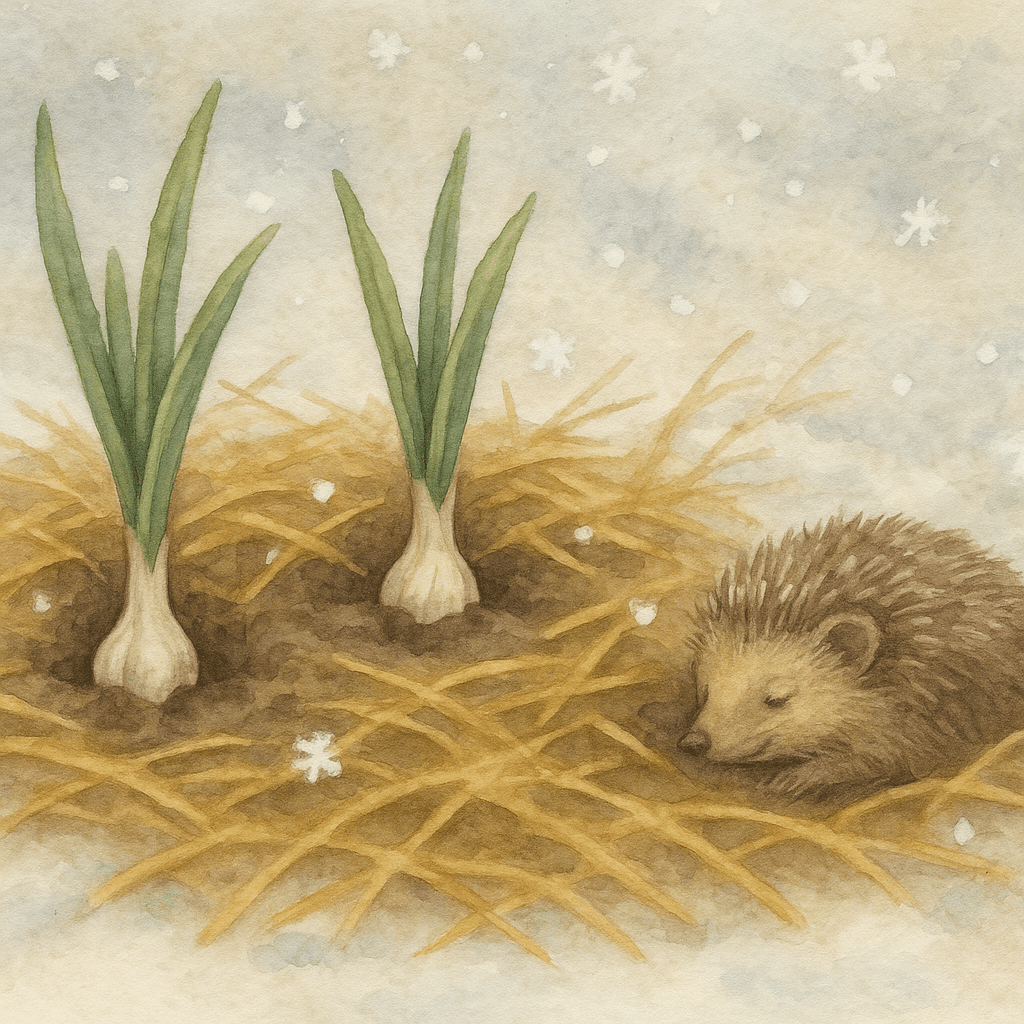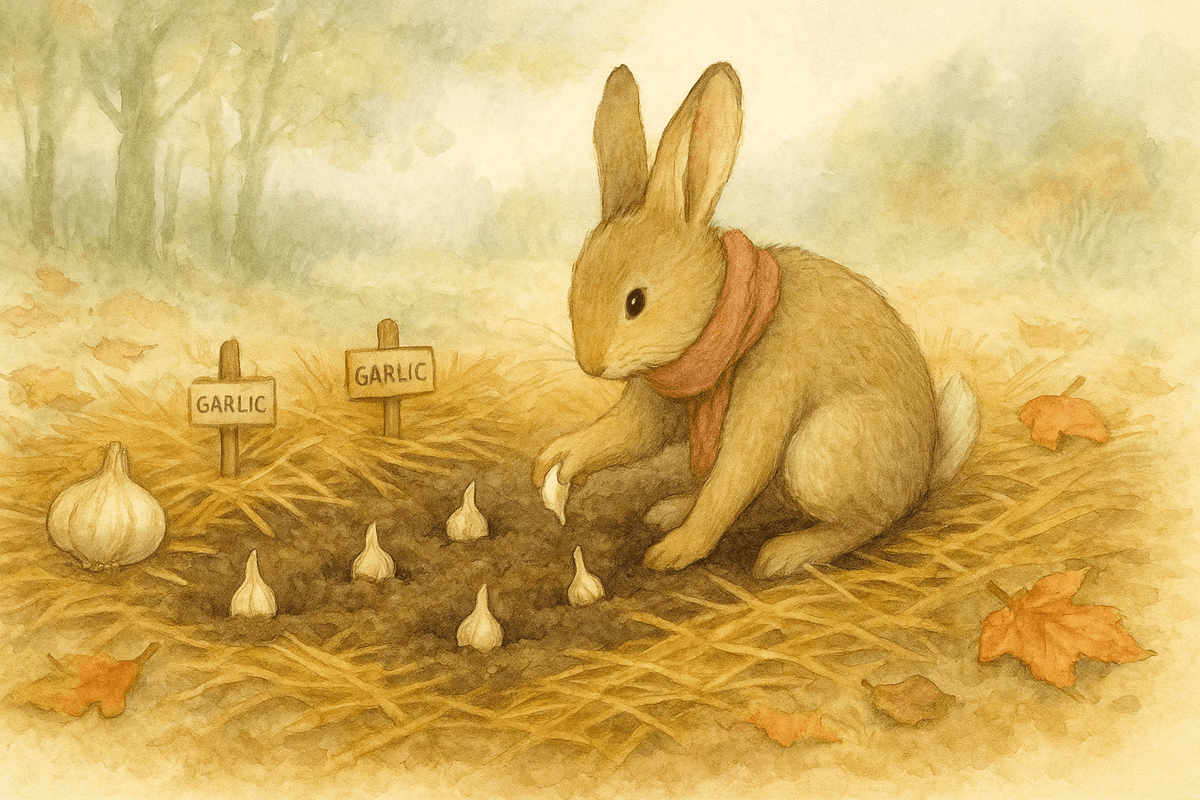The Gentle Art of Growing Garlic
Garlic might be the single most satisfying thing you can plant in the fall. One clove becomes a whole bulb. You tuck it into the cool autumn soil, forget about it through the darkest months, and then—like magic—it reappears right when the rest of the garden is still waking up.
Here in the Pacific Northwest, garlic is almost too easy, and it rewards you with big bulbs, long storage, and flavors far better than anything from the grocery store.
Below is your cozy guide to choosing the right type, planting at the right time, and keeping your cloves snug through winter.
Garlic Types: Which Should You Grow?
Hardneck Garlic
Best for: Cold climates (perfect for PNW), big cloves, strong flavor
What you get:
6–10 fat cloves per bulb
Incredible flavor range (spicy, floral, smoky)
Scapes in early summer — delicious!
Why choose it:
Hardneck garlic gives you the chef’s garlic. It’s more aromatic, easier to peel, and more reliable in PNW fall–spring conditions.
Softneck Garlic
Best for: Milder climates, long storage
What you get:
10–20+ smaller cloves
Very long shelf life (6–10 months)
Braids beautifully
Why choose it:
If you love to store garlic through the year or make braided garlic ropes, softneck is your friend.

When to Plant Garlic (PNW Timing)
The golden rule:
Plant garlic in fall, before the ground freezes but after temps cool.
Best planting window (PNW):
Mid-October → Mid-November
Garlic needs cool soil to start root growth, but not so cold that the ground freezes solid. Planting in this window gives cloves time to anchor in before winter rains arrive.
If you’re late?
You can still plant through December, but bulbs may be smaller. Worth it anyway!
How to Plant Garlic (Simple + Foolproof)
- 1
Choose big, healthy seed garlic
- Break bulbs gently into individual cloves
- Keep the papery skin on
- Use the largest cloves for planting (they make the largest bulbs)
- 2
Choose big, healthy seed garlic
Garlic loves:
- Full sun
- Loose, well-drained soil
- Compost on top (but not fresh manure)
- 3
Plant cloves pointy side up
- Depth: 2–3 inches deep
- Spacing: 6 inches apart
- Rows: 10–12 inches apart
Odd Garden note:Don’t overthink it — garlic is forgiving.
- 4
Mulch generously
This is the PNW secret weapon. Add 3–5 inches of:
- Straw
- Leaves
- Shredded yard debris
Odd Garden note:Mulch protects the cloves from freeze–thaw cycles, keeps weeds down, and holds moisture through fall.

Winter Care: What Garlic Needs (and Doesn’t)
Garlic is one of the few crops that likes winter. Mostly, you leave it alone.
What to do:
Keep mulch in place
Make sure soil drains well
Check for pooling water after big storms
What not to do:
Do not fertilize now
Do not water (rain does it all)
Do not worry about cold — garlic is frost-proof
In late winter, you’ll see bright green shoots pushing up through the mulch like tiny signals of spring.

Spring Care (Quick overview)
Even though this post is “fall + winter,” here’s the next step so readers know what’s ahead.
In March–April:
Remove some mulch if it gets soggy
Fertilize lightly with nitrogen (fish emulsion or balanced organic fertilizer)
Keep soil evenly moist but never waterlogged
In June:
Harvest scapes from hardneck varieties
Cure bulbs for 3–4 weeks in a warm, airy space
Why Growing Garlic Feels Like Magic
Garlic is one of the few crops where you do the work now and enjoy the reward much later.
There’s something poetic about planting little cloves on a chilly fall day — knowing that under the soil, they’re quietly rooting, waiting for the first hint of spring.
If you’ve never planted garlic, this is the year.
If you already have… plant an extra row. You’ll always wish you grew more.
Enjoying this post?
If you love the whimsy and want to support more PNW garden guides, you can buy me a coffee.
🌼 Buy Me a Coffee


